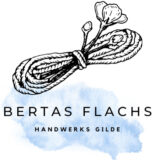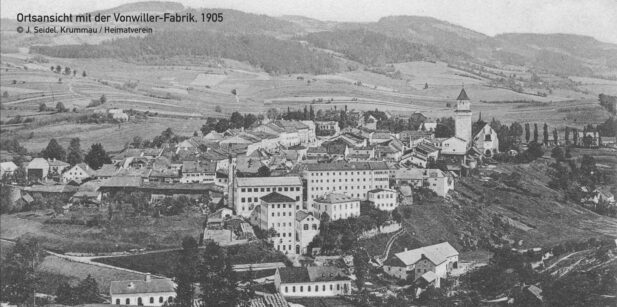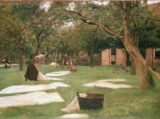Flax and linen are part of the textile DNA of Northern Europe. Until the early 1950s, handmade linen fabrics were the most important raw materials for all kinds of simple clothing in many parts of the continent alongside wool. Today, linen is only a side note in the textile industry
In the 17th and 18th centuries, the wealth of the linen merchants of the Mühlviertel was proverbial and the home weavers also found a modest but nonetheless attractive additional income. Linen products from the Mühlviertel travelled by horse-drawn carriage as far as Italy to find buyers there. However, the impending end of the flax era in Austria was already looming around 1919. After the end of the monarchy and the resulting reduction in an easy sales channel, the area under cultivation in the Mühlviertel alone was reduced from 2900 hectares to 785 hectares (which was still 785 hectares more than we have today).
During the Second World War, uniforms were still being produced at full speed in many local factories and, at the same time, many home weavers were still working on their looms to make up for the lack of imports. In 1952, a law was passed that completely banned home weaving for piece or metre goods. At the same time, the desire for cheaper cotton and synthetic fibre products grew strongly in the post-war period. People wanted to quickly forget the hardships of the war.
No more travelling into the blue
In 1960, there was hardly a farm left outside whose gates the blue flax flowers could entice you to take a "trip into the blue". Along with the farming tradition, the many industrial weaving mills also disappeared, albeit somewhat more slowly but inexorably. While Austrian weaving mills still supplied 88 per cent of the country's needs in 1955, this figure had fallen to 53 per cent by 1975. Today we are at less than 10 per cent. The largest weaving mill for linen products in the Mühlviertel also closed its doors in 1999.
Today, three small linen weaving mills in the Mühlviertel region still produce high-quality linen fabrics, sourcing their raw material from Europe, but no longer from the neighbourhood. Overall, linen only accounts for 0.6 to 1 percent of all fibres used on the global fibre market. A sad decline of a once so valuable raw material.








